Exploring a beautifully restored palace & garden in Sintra
Sintra, the beautiful town on the west coast of Portugal, is well known for its majestic residences and Moorish palaces. I went there with the aim of seeing the Quinta da Regaleira–with its dubious wells and almost sinister Gothic Revival architecture. But then somehow my tour started at the beautifully renovated palace and garden of Monserrate. Surprisingly less hyped then the other sights, the tour offers a wealth of inspiration–both in the immaculate restoration of the palace interior, as well as the jaw dropping design of the garden.
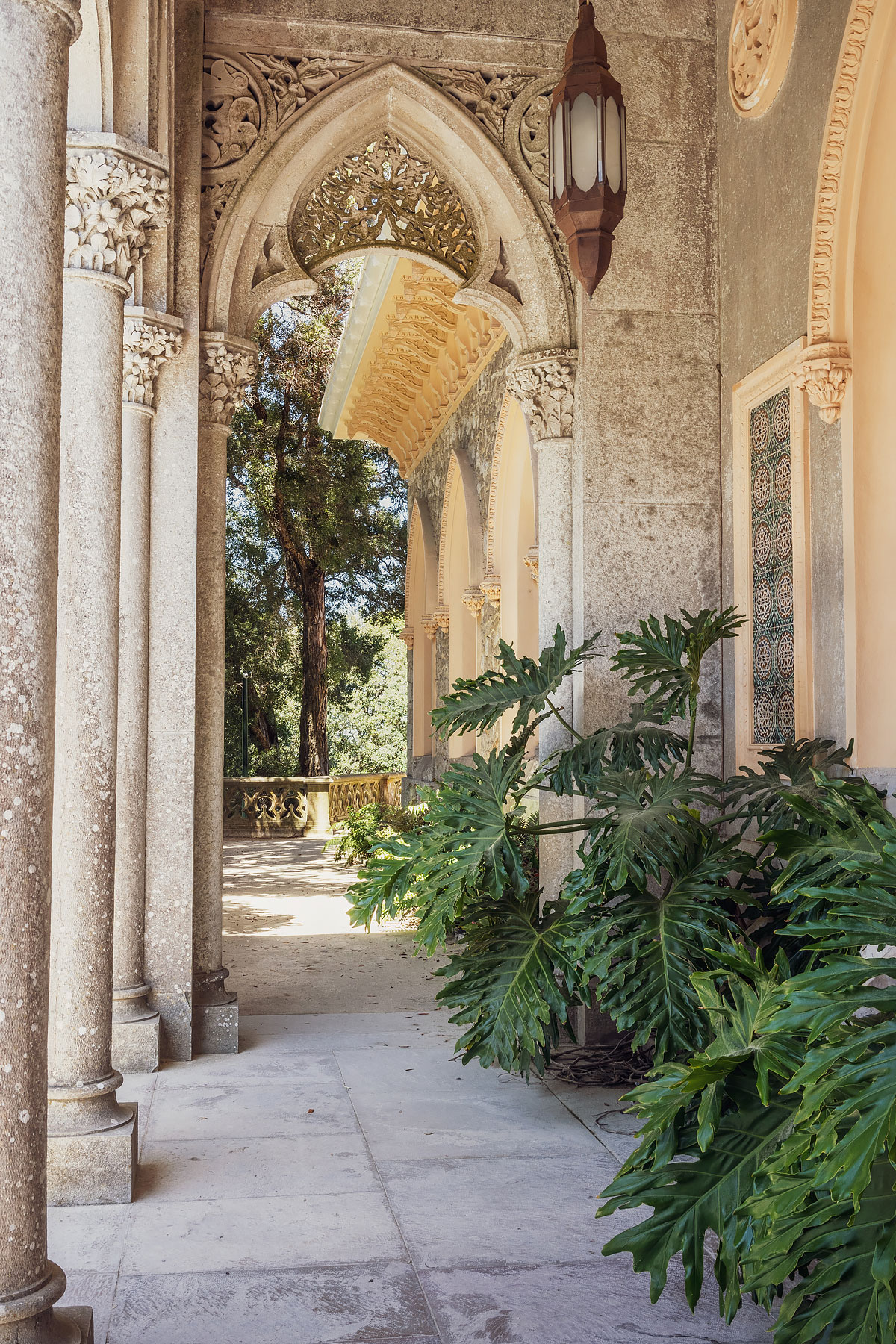
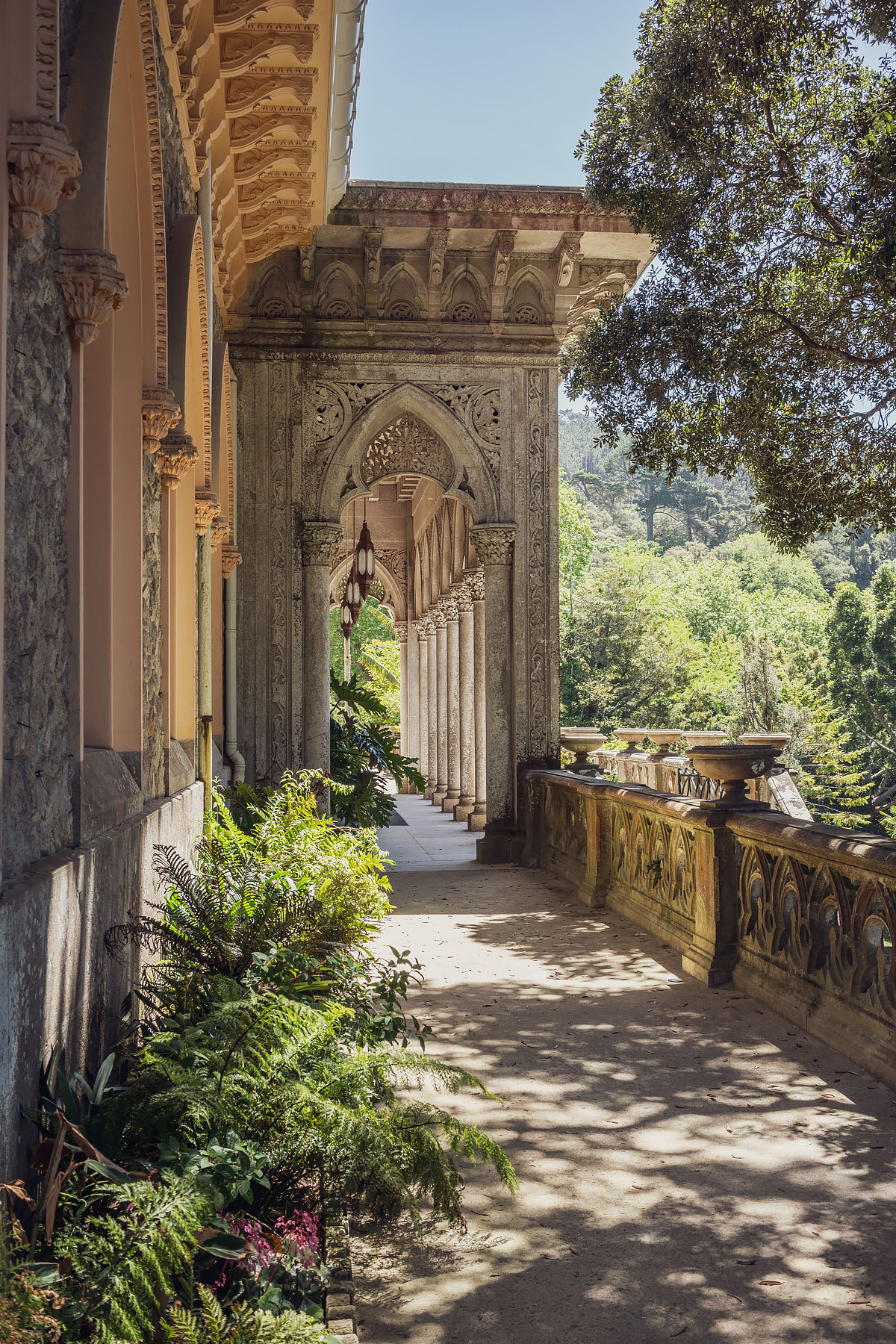
It’s hard to decide whether it’s the impeccably designed garden, with its lush vegetation of exotic species, or the intricate interior details of the summer house, but the park and palace is nothing short of breathtaking.
The stately home that we can enjoy today, was built during the 1960’s on the ruins of a neo-gothic structure by Sir Francis Cook. For decades, the building lay in ruins, before repairs began in 2000. Since its restoration, the estate has since been classified as a Unesco World Heritage site.
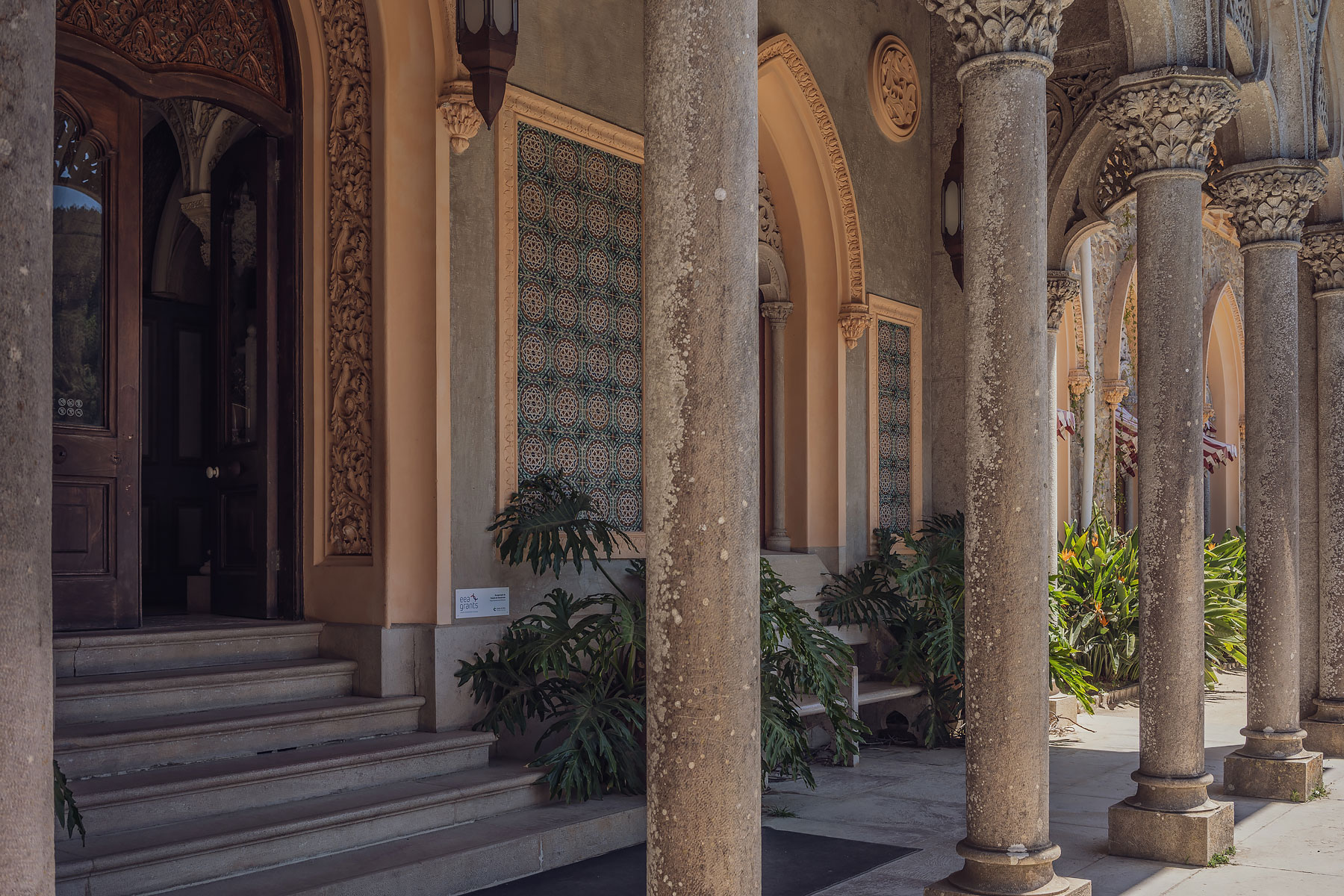
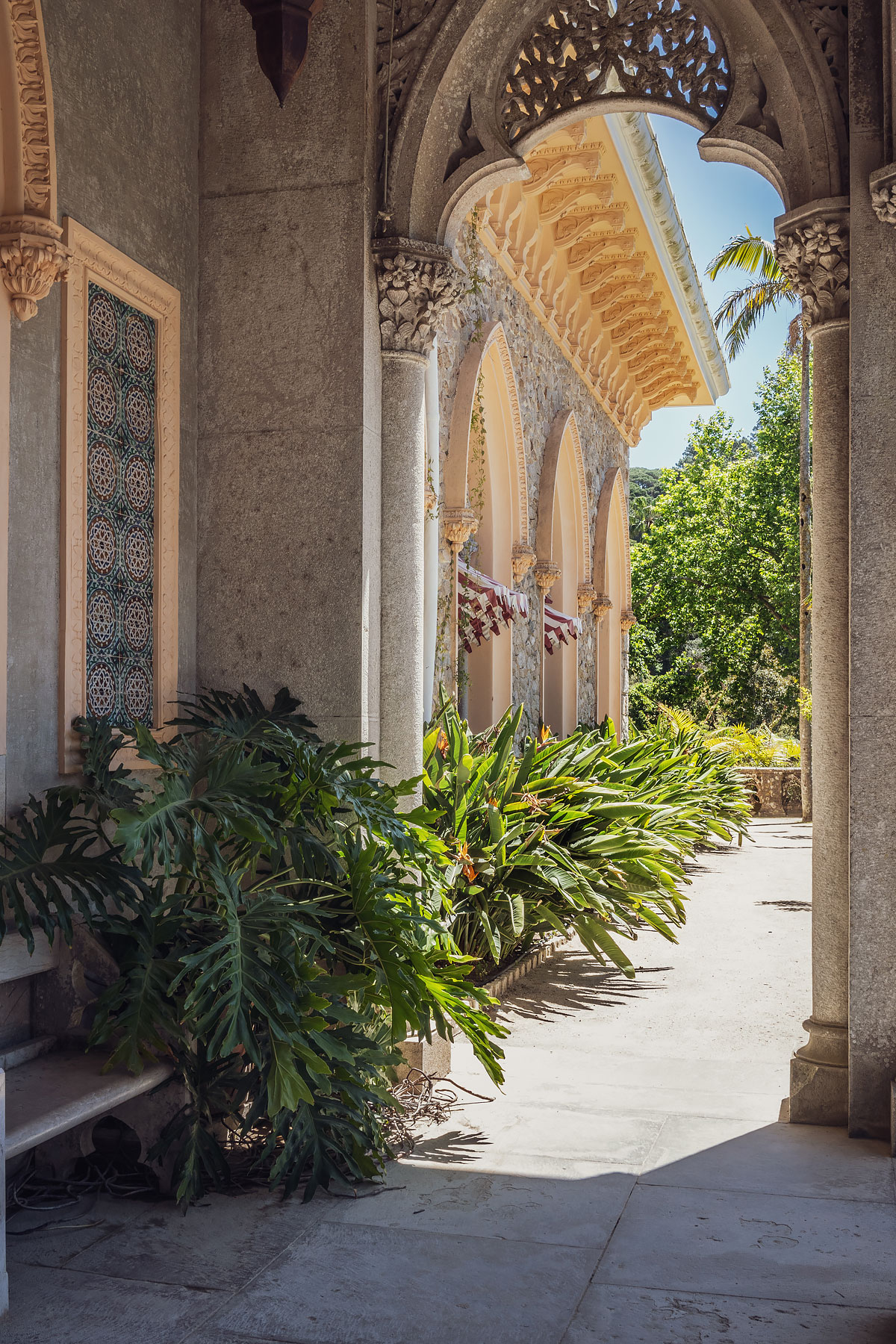
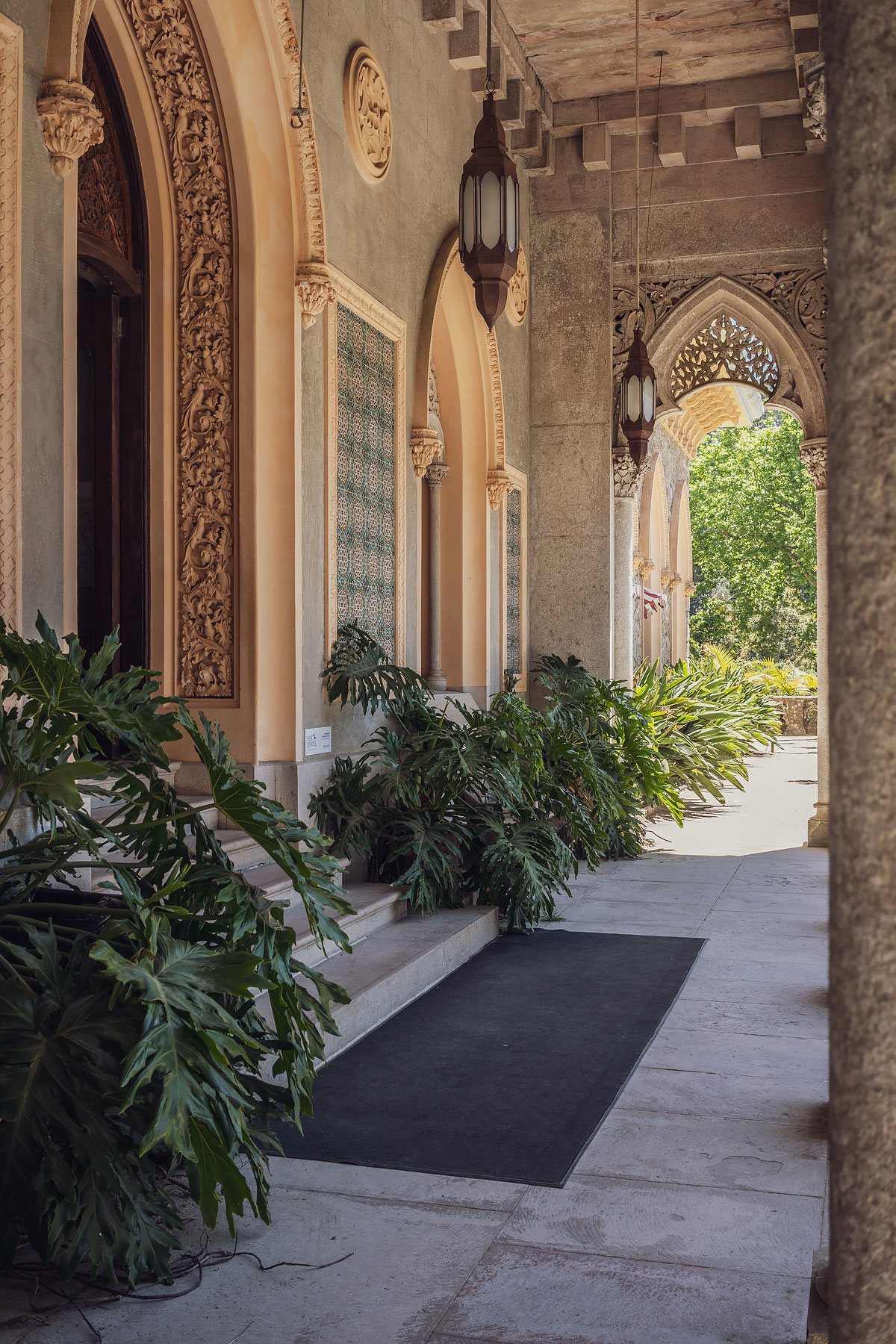
At first glance the place looks like a mash-up of architecture styles from the Middle-East, India and Europe; reminiscent of a fantasy inspired set built for Game of Thrones or Lord of the Rings. This is in fact the very characteristic of the Romanticism architecture so popular of the time. Often referred to as “Gothic-Revival” architecture, it was characterised by imitations of older Gothic and Moorish styles.
Inside, the rooms are adorned with intricate plasterwork with complex designs and fine detailing exemplary of the Moorish influences (Moorish refers to the islamic styles characteristic of decorative tile work, patterned ornament and intricate arches).
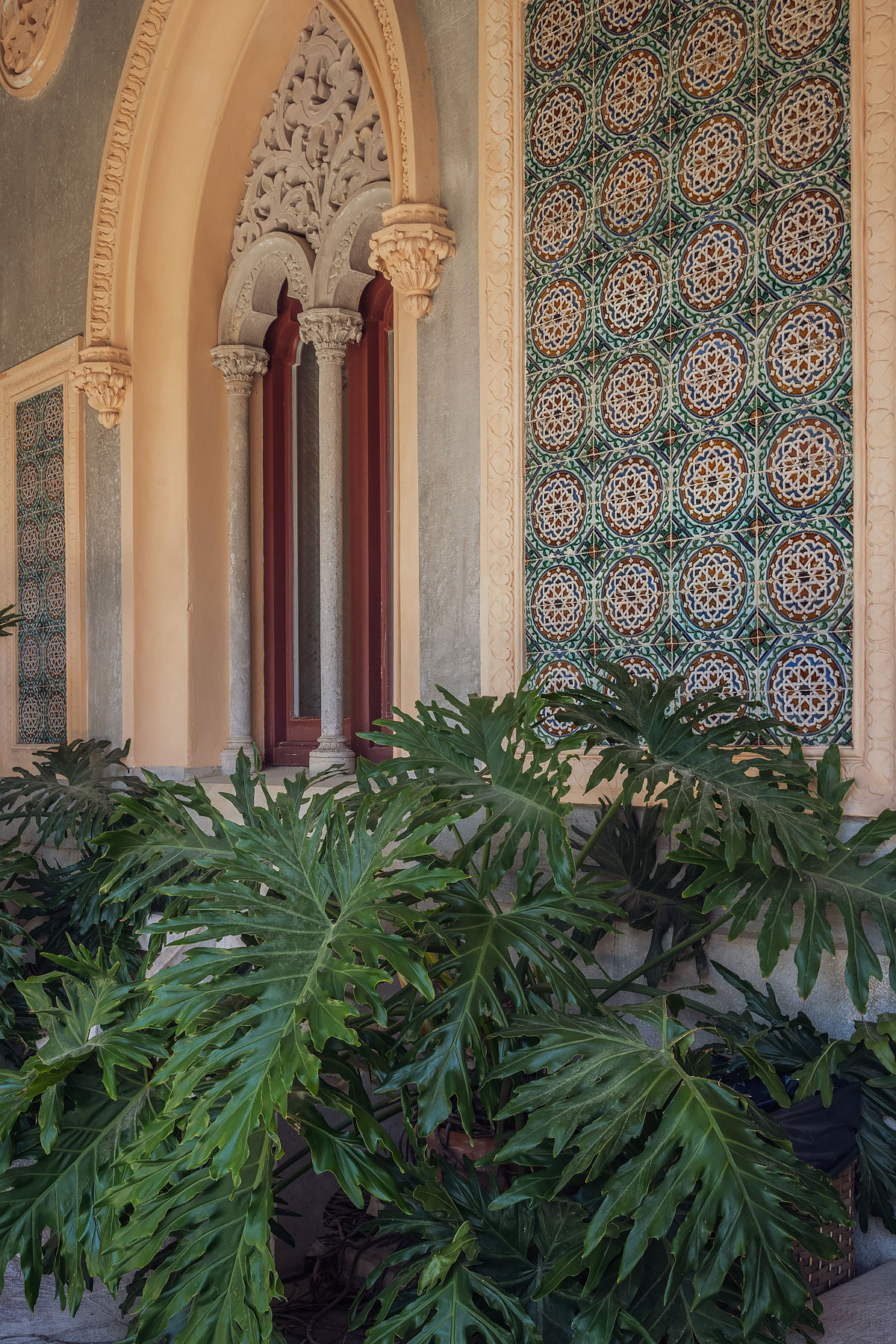
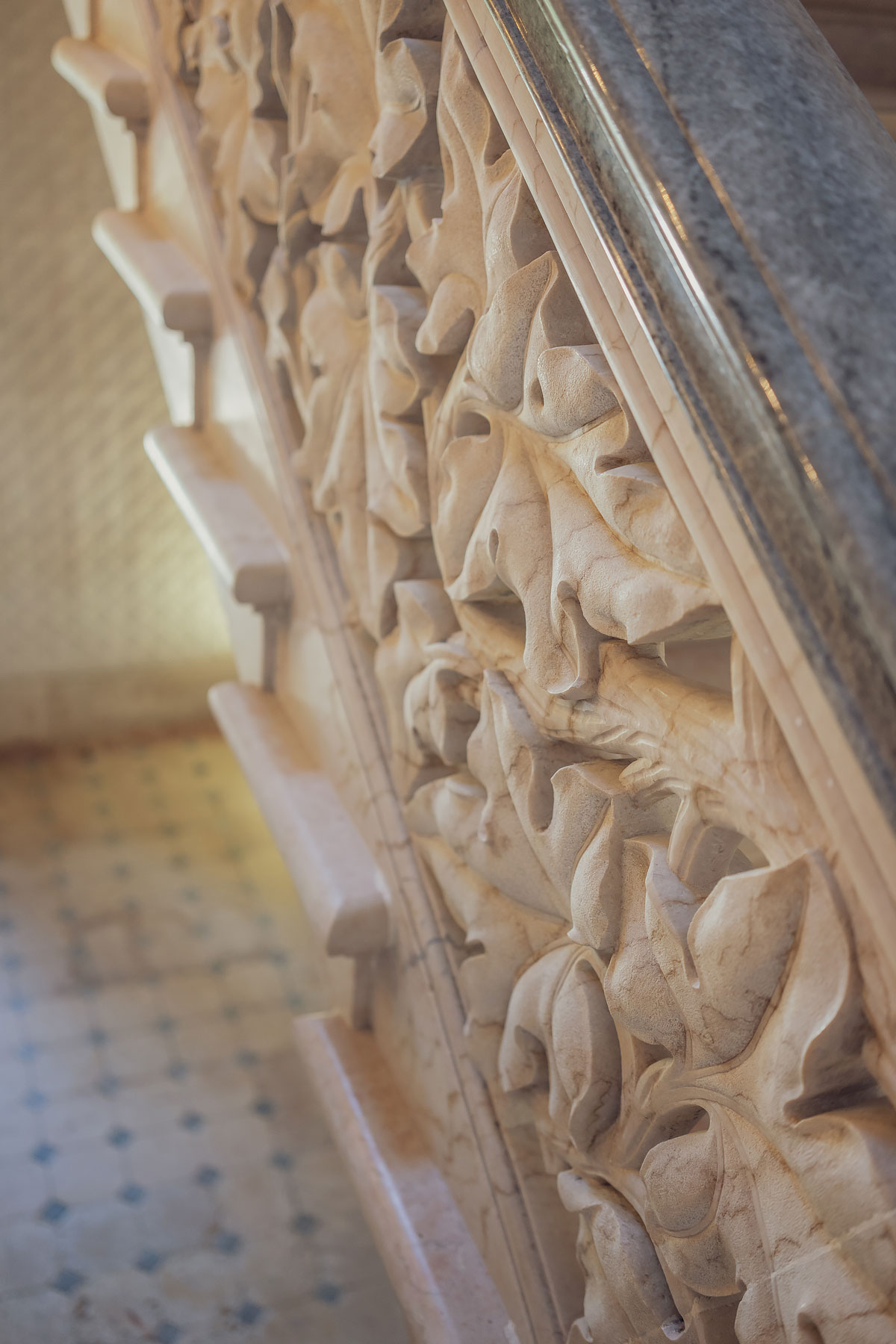
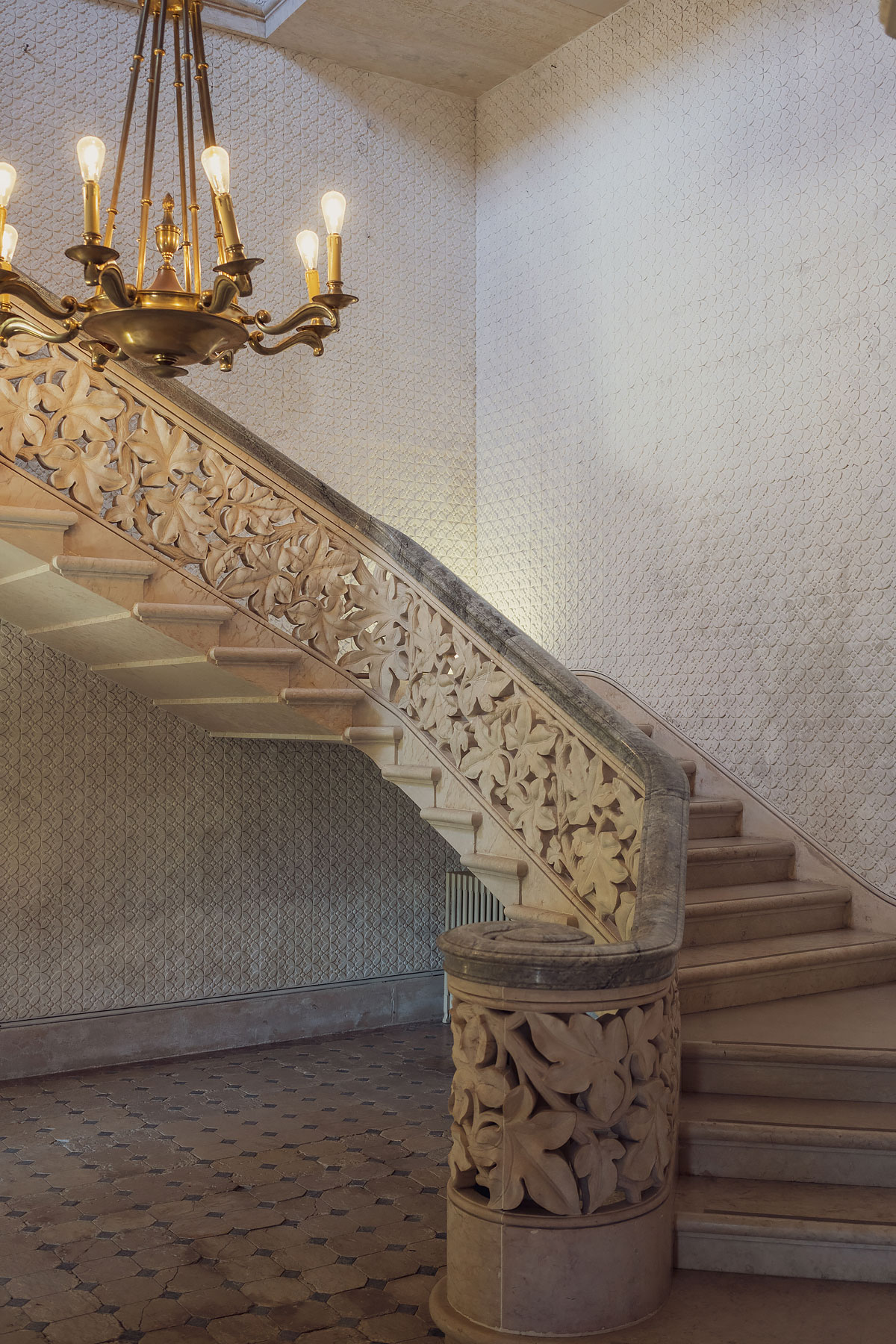
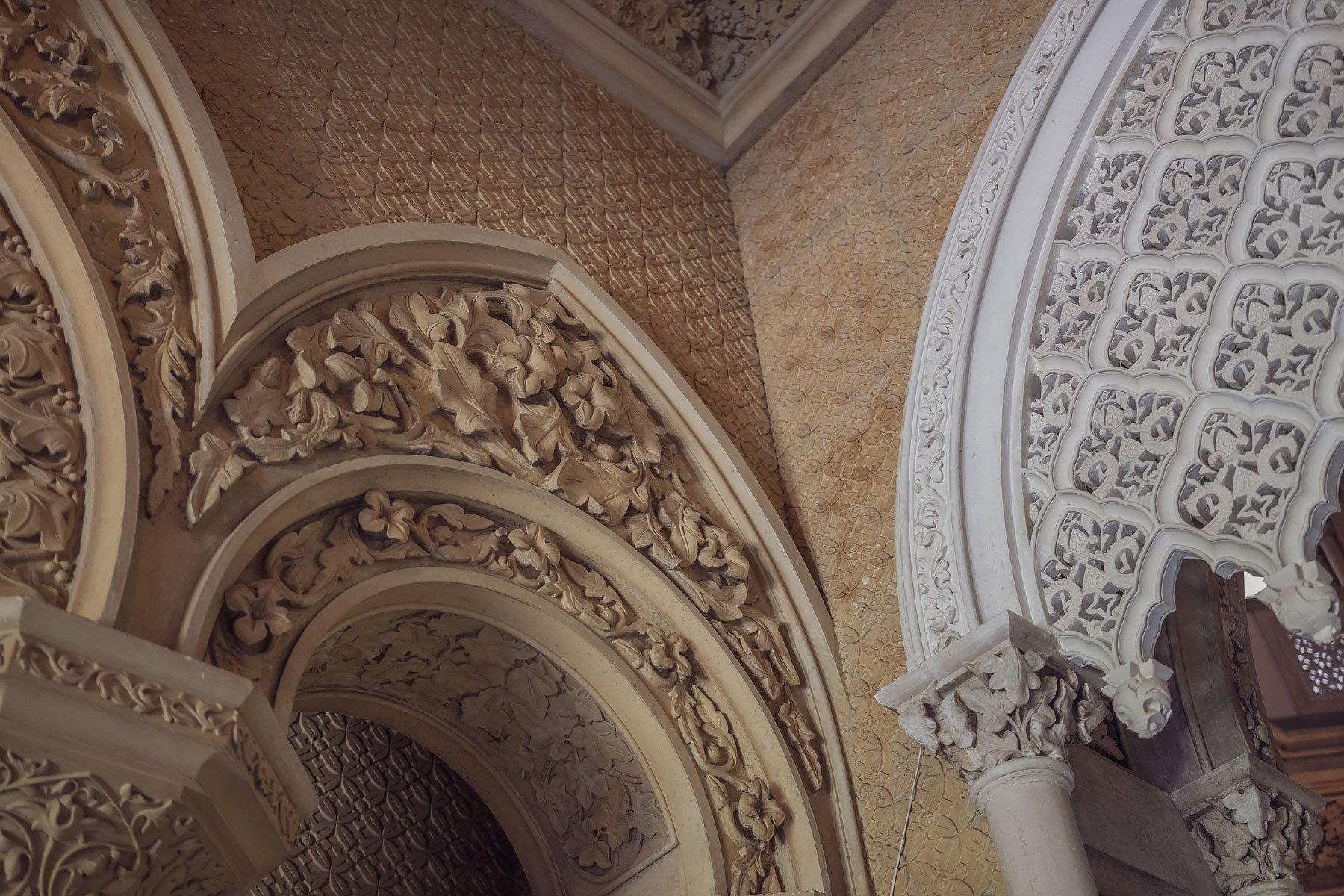
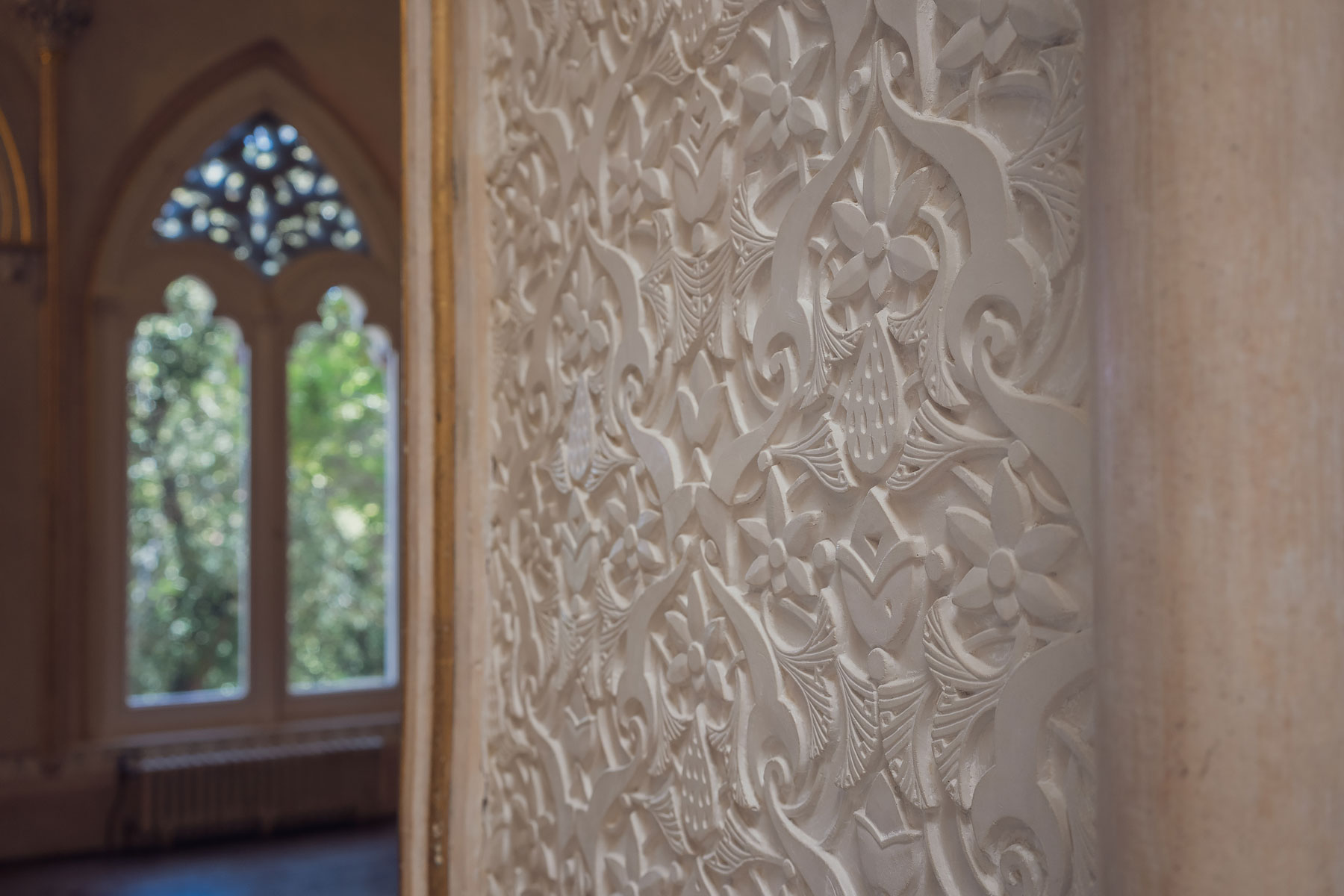
Gothic style Ogee arches (an arch with two ogee curves meeting at the apex) frame the windows and doorways, leading into sizeable chambers, painstakingly decorated from nook to ceiling.
The textural details are delightfully pleasing–begging to be touched and traced–albeit in the mind, for I know better than to disturb such painstakingly restored handiwork. The entire structure is impressively ornate and would border on grotesque if it wasn’t for the high level of craftsmanship and tasteful choice of materials throughout the interior.
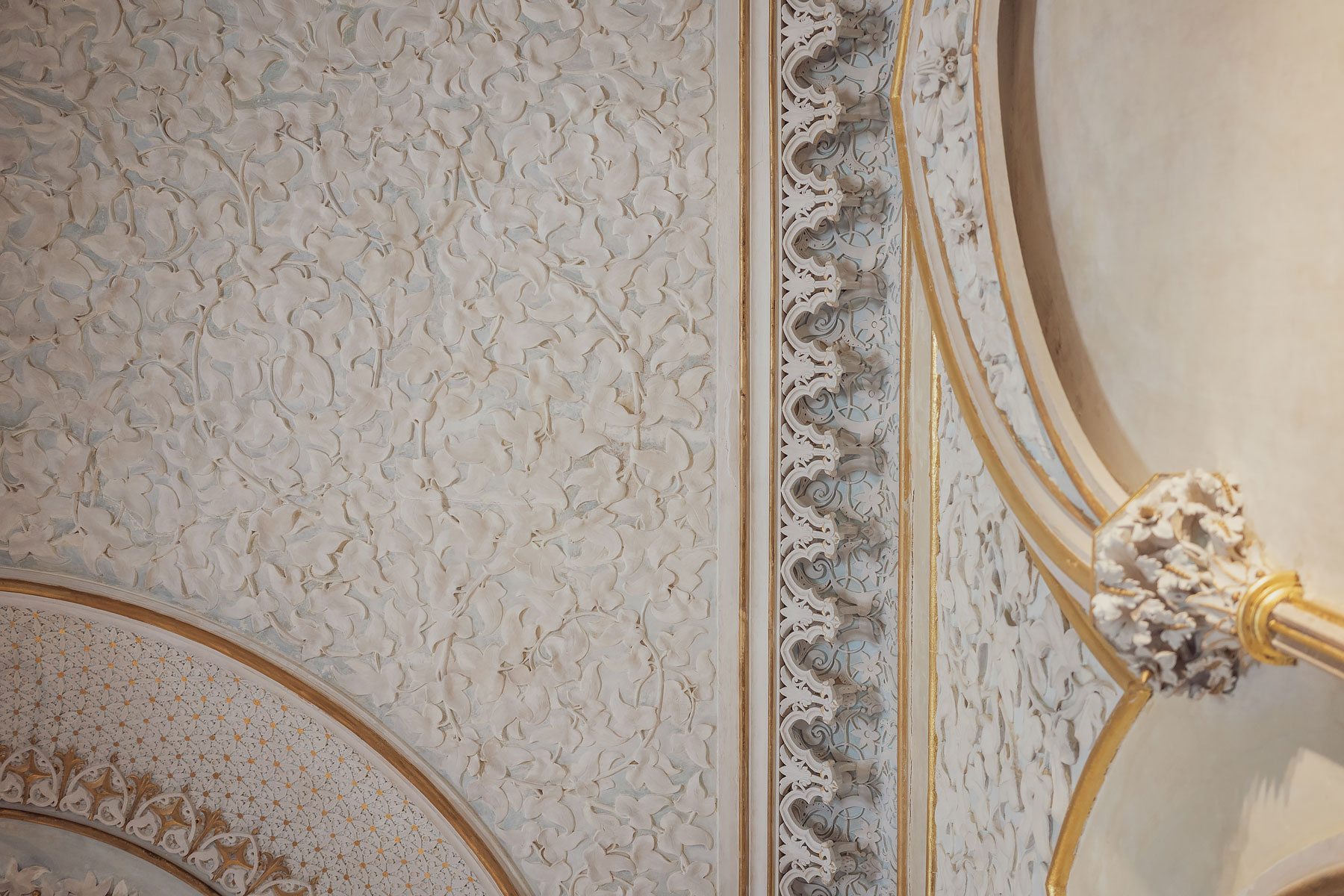
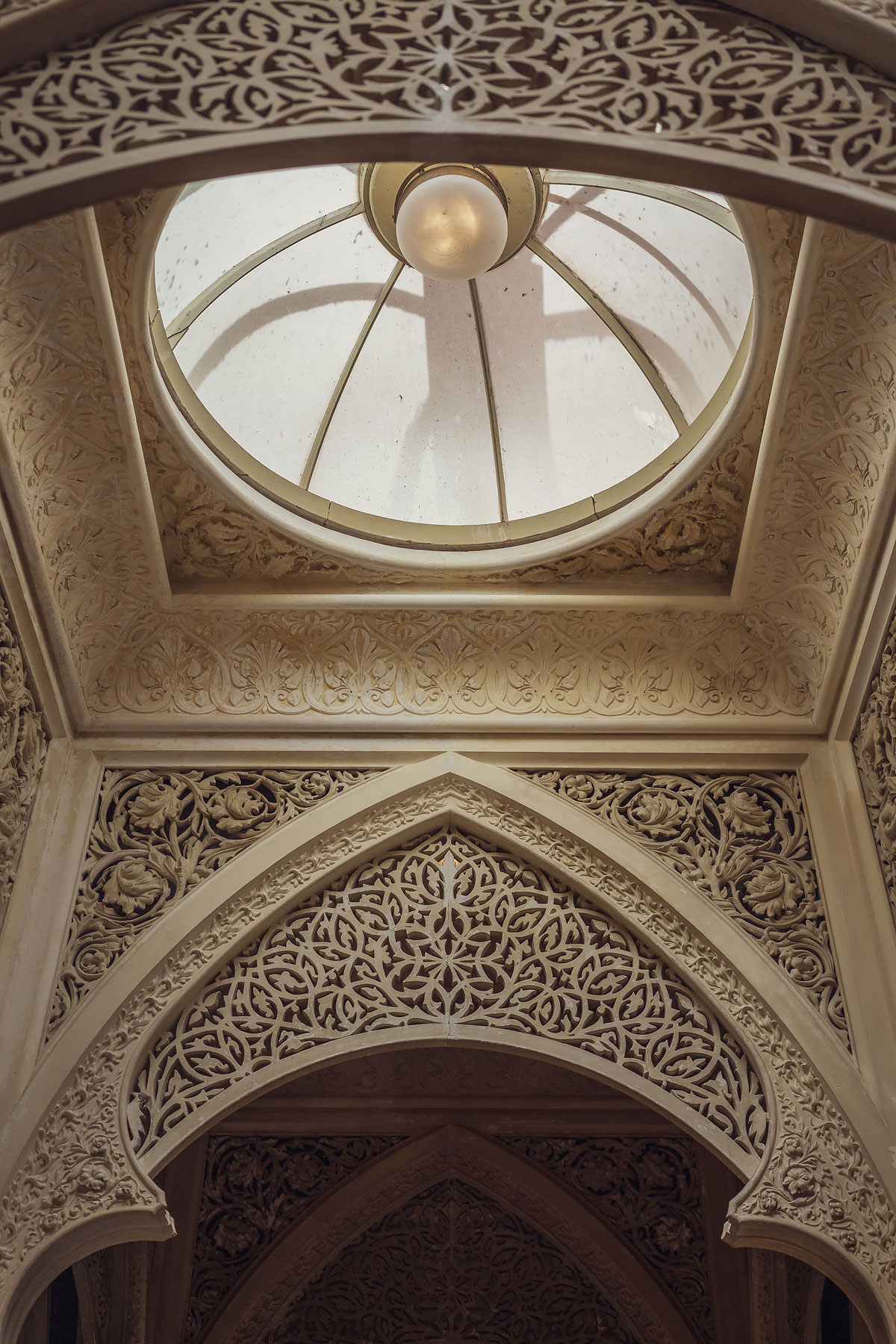
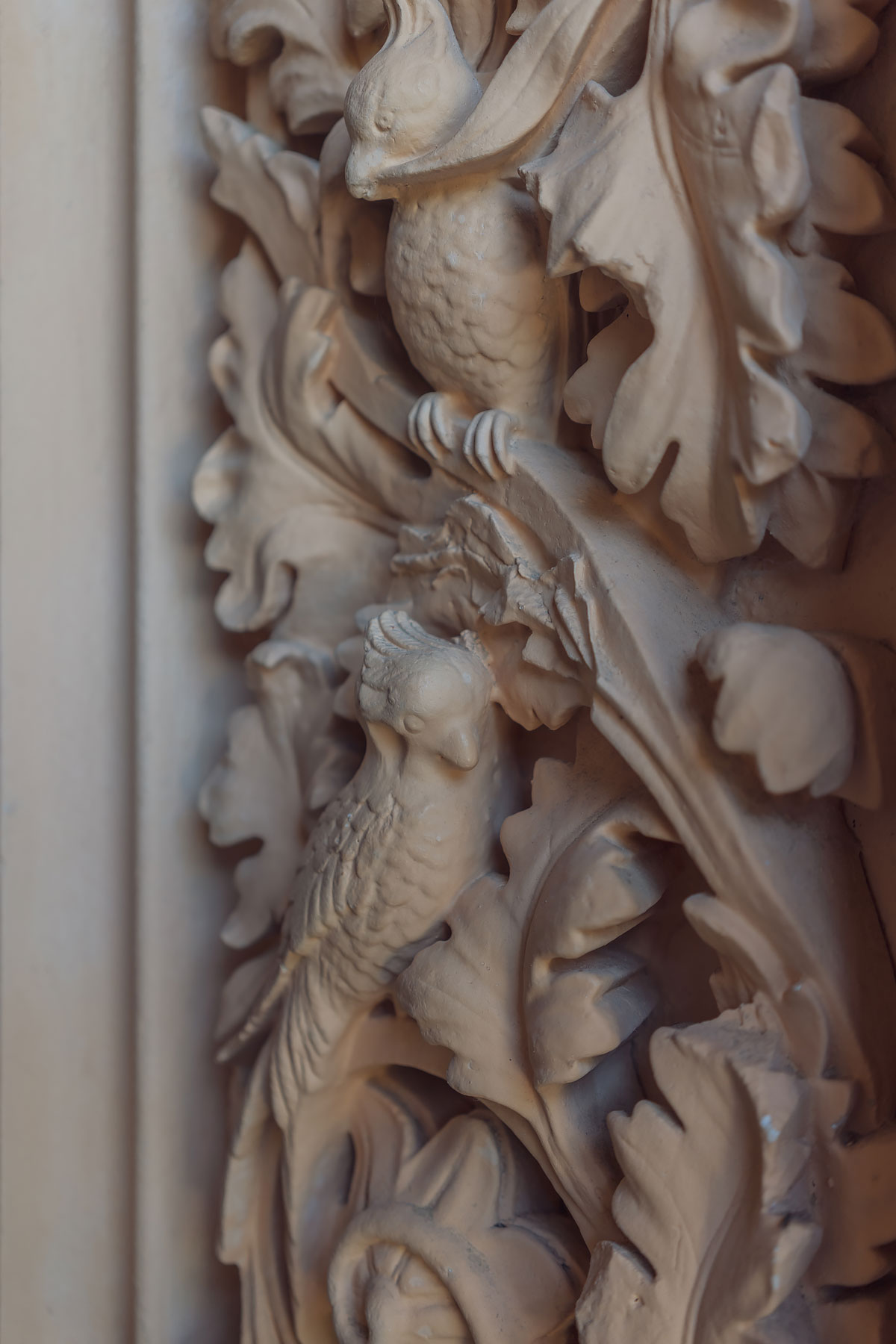
Even though the house no longer has any furniture, it’s not hard to imagine Cook’s impressive art collection on display at one point in time. The charming views call to mind scenes of how the residents must have lived there once. With balmy evening summer parties and sunny picnics on the huge open lawn.
Even more breathtaking, is the spectacular garden that surrounds the house. Peering through the dense canopy, you can catch a glimpse of the dark blue Atlantic Ocean sending its soft and salty breeze up the hillside and through the treetops.
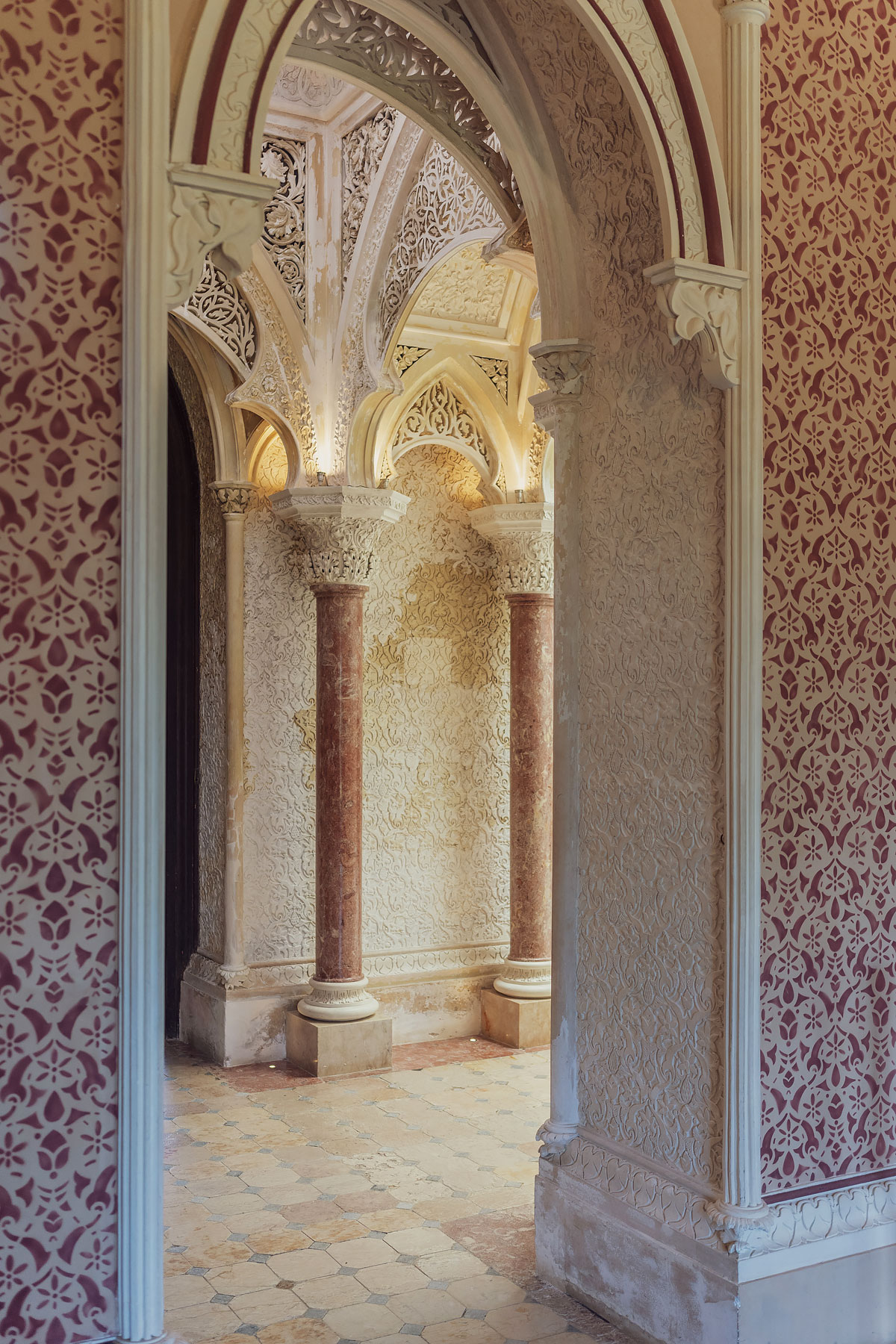
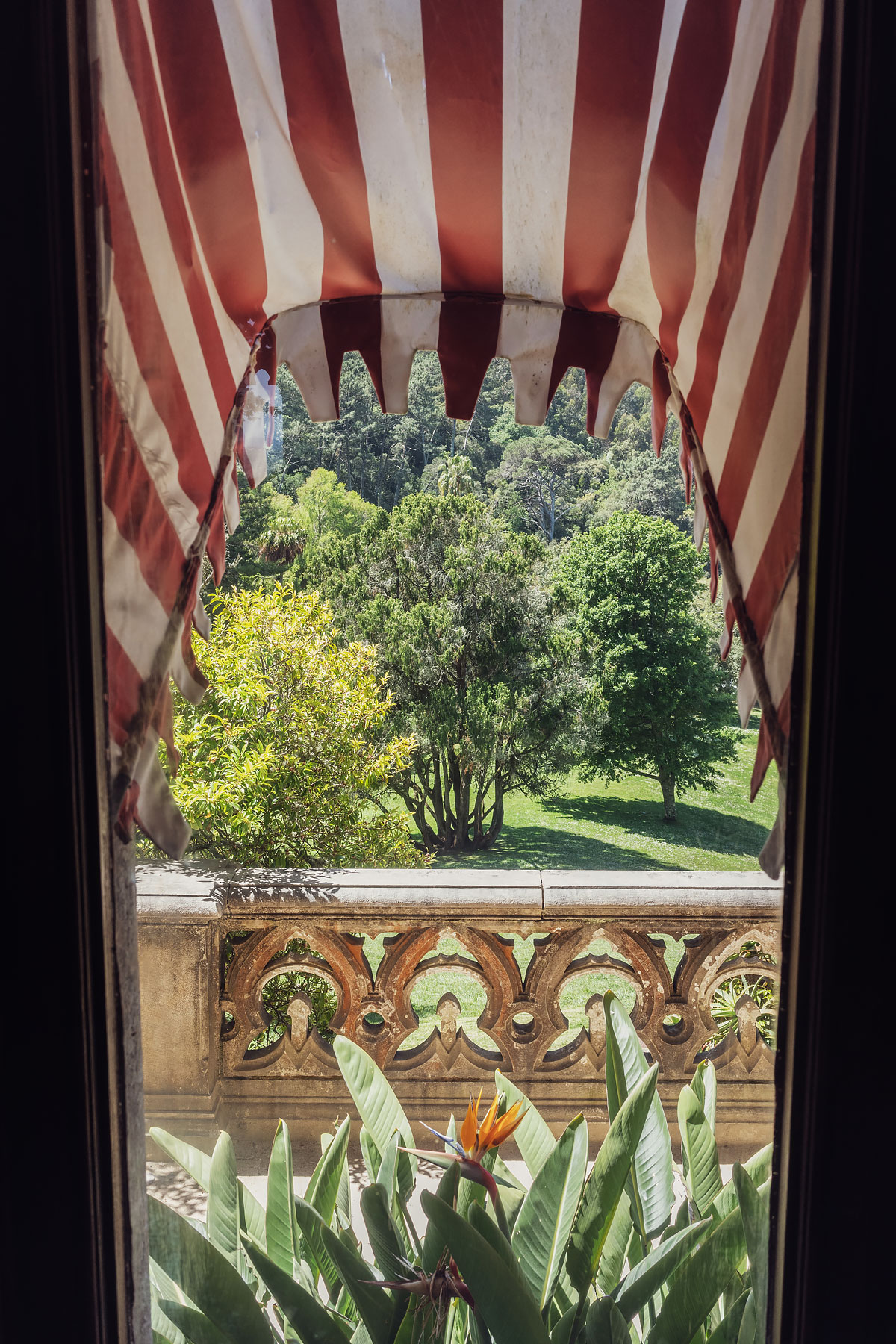
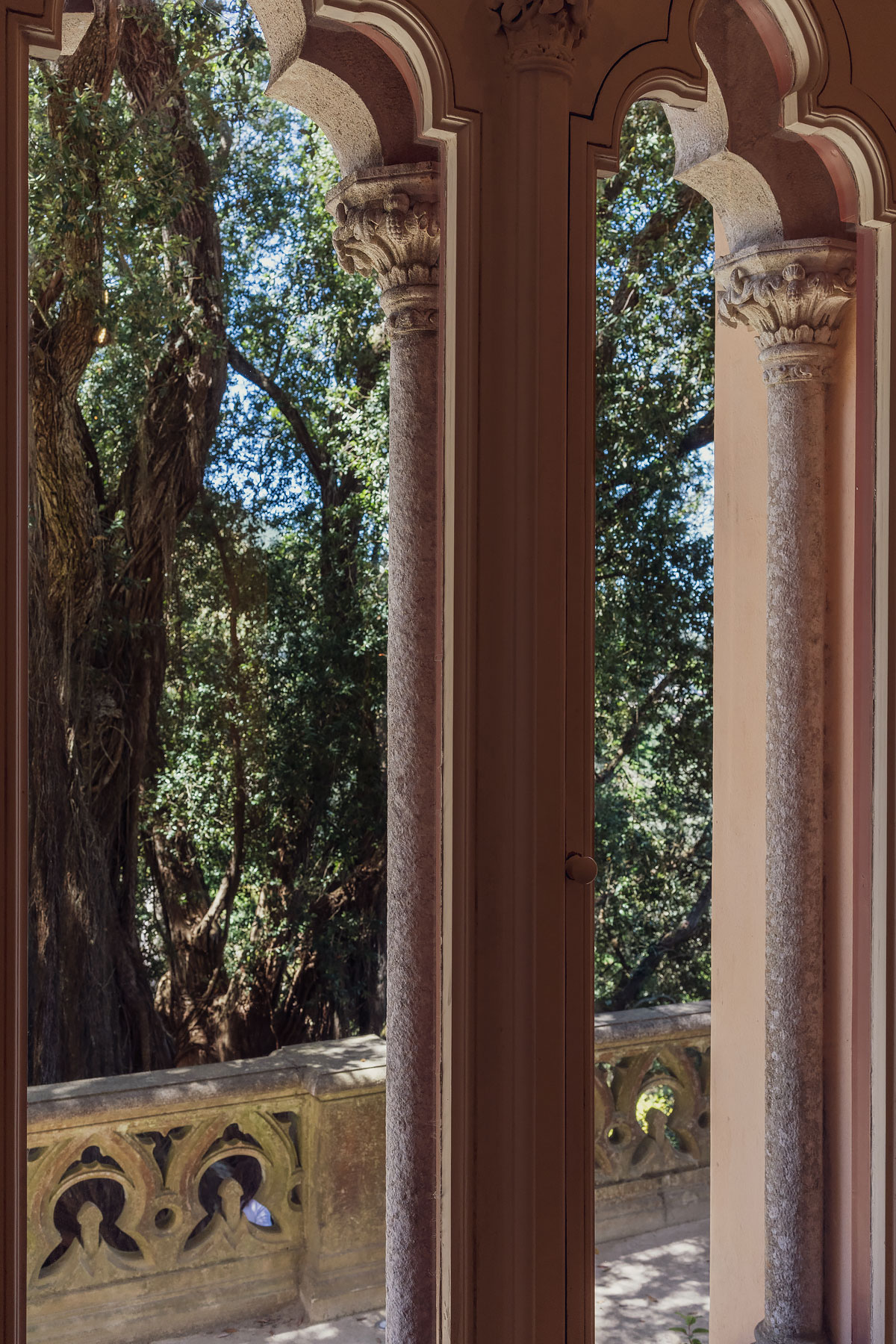
Although the climate in the surrounding area is semi-arid, the Sintra Mountains are considered moderately humid with higher precipitation in the mountain areas. The micro-climate caused by the natural landscape has given rise to dense foliage with a rich botanical variation.
For this reason the gardens here can sustain a huge array of foreign species. Cook collected a massive amount of exotic specimens, originating from as far as North and South America, from Mexico all the way to Southern Africa. A short walk past the giant Sterlizia and Japanese garden you’ll find a massive redwood towering proudly above its branchy peers.
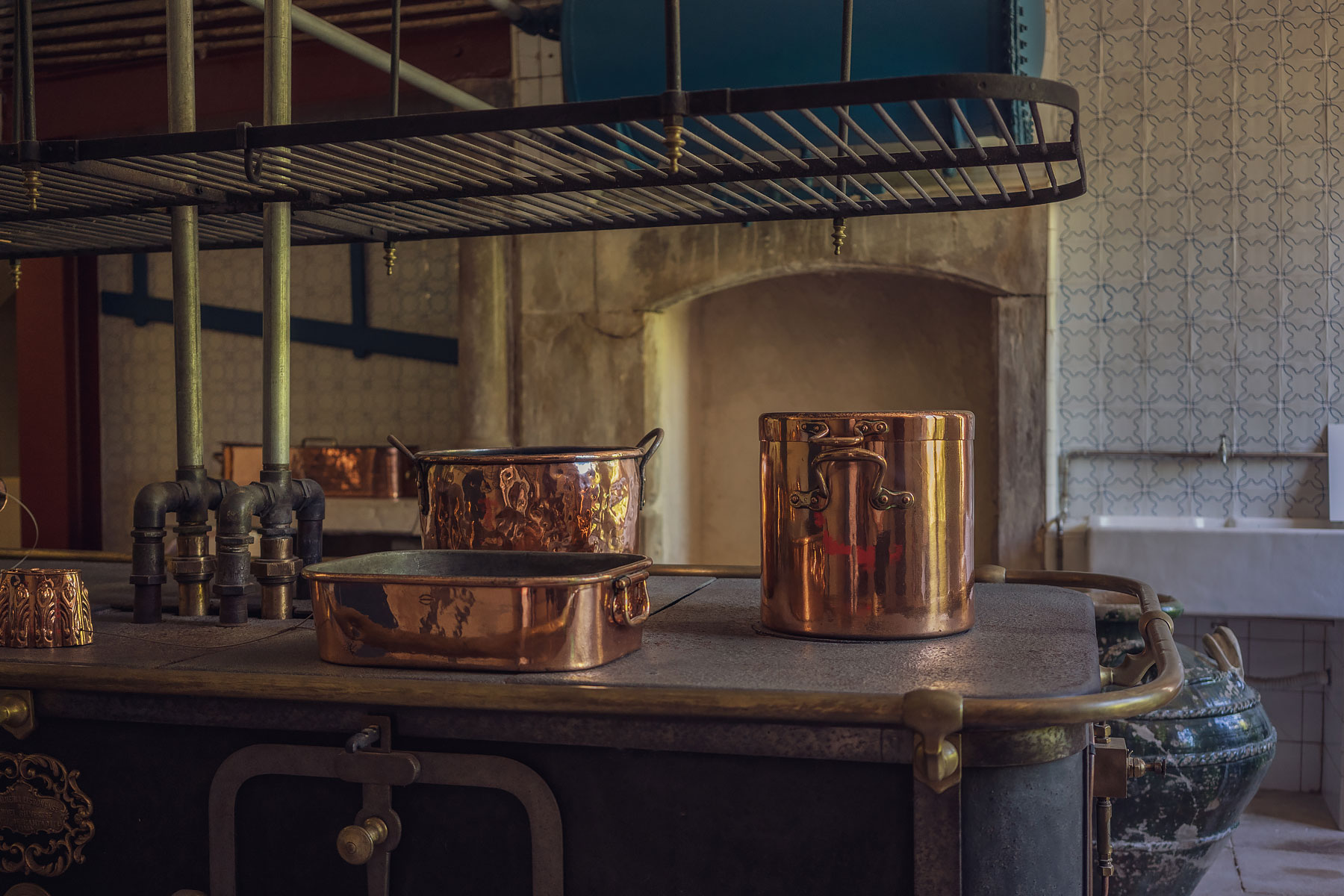
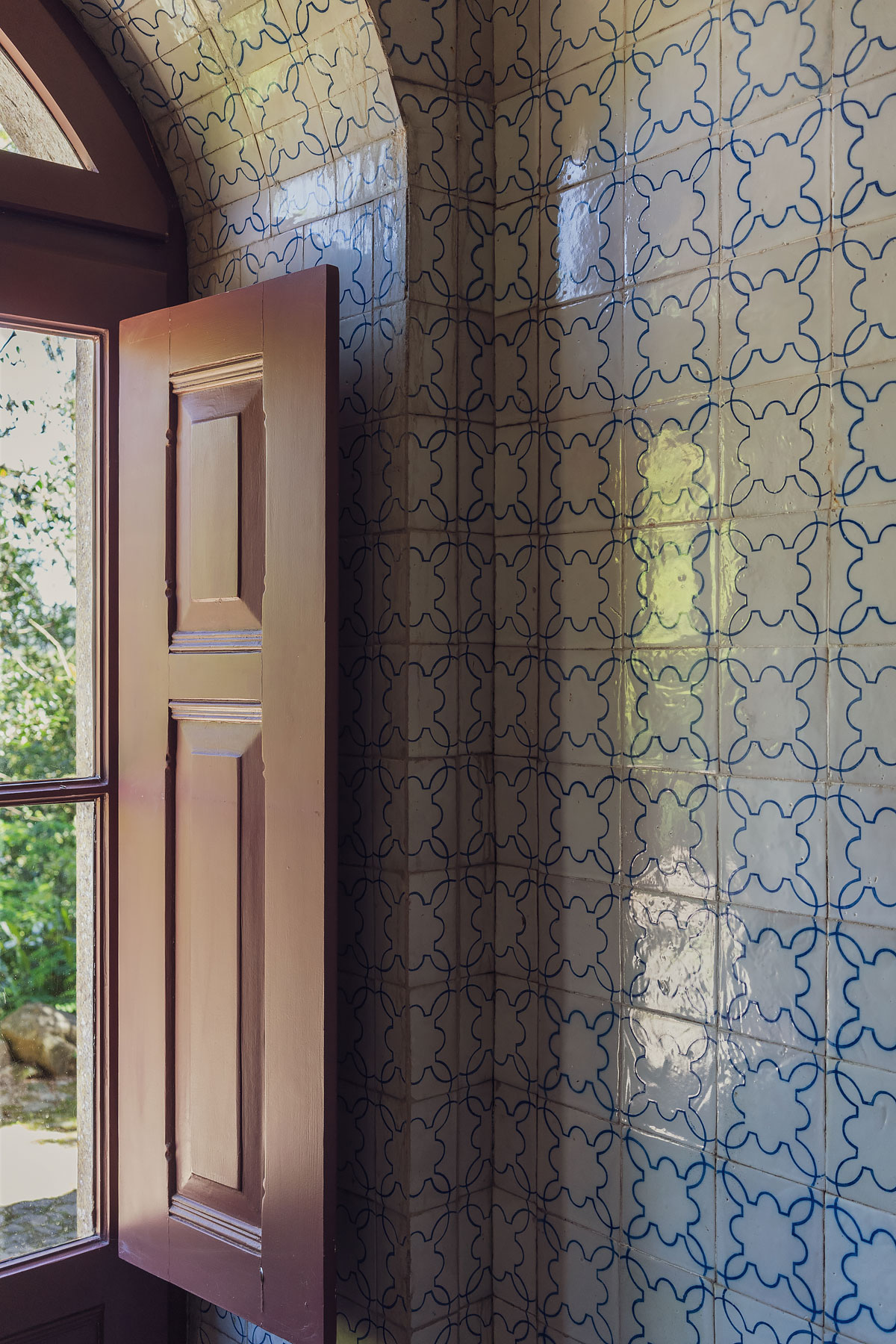
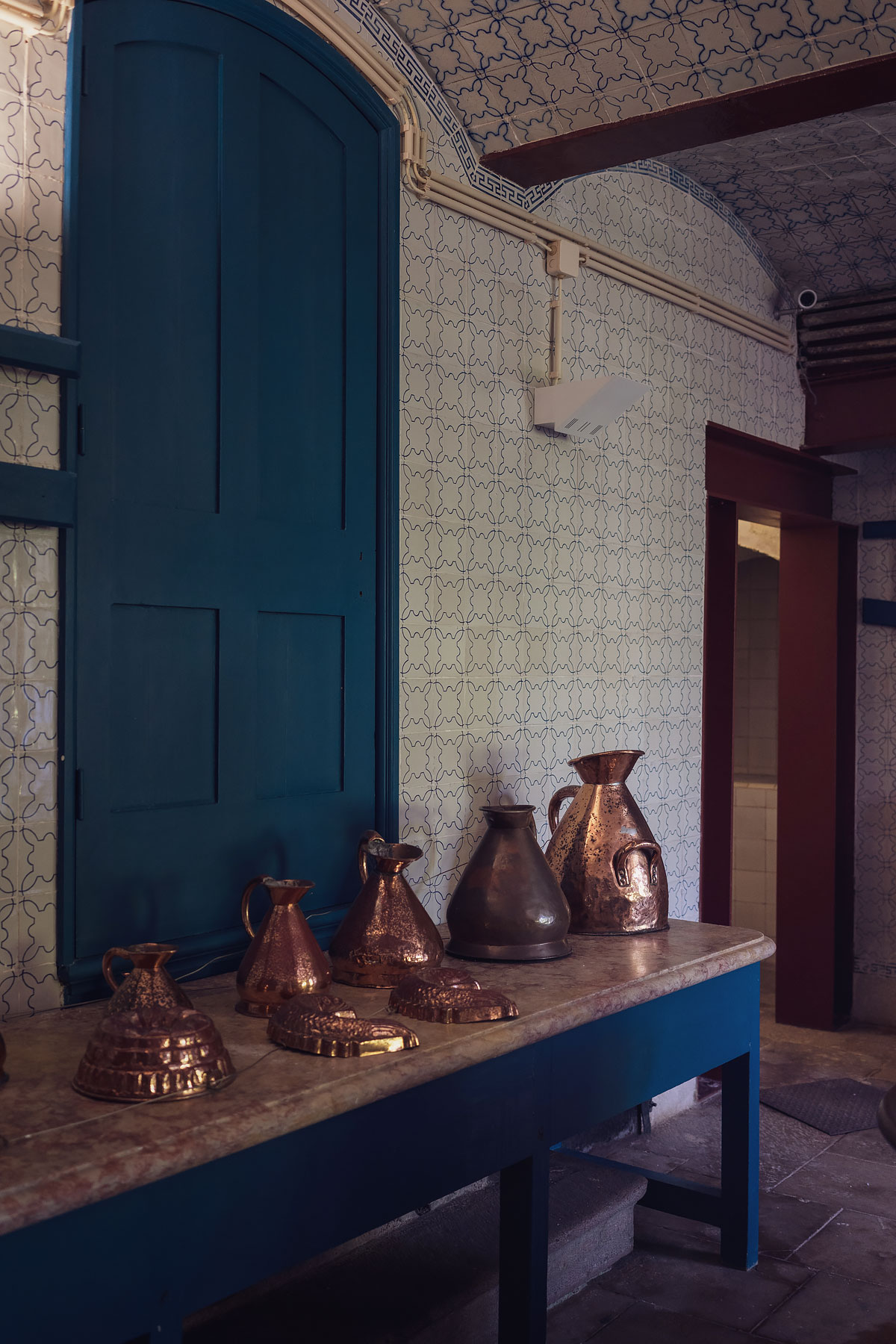
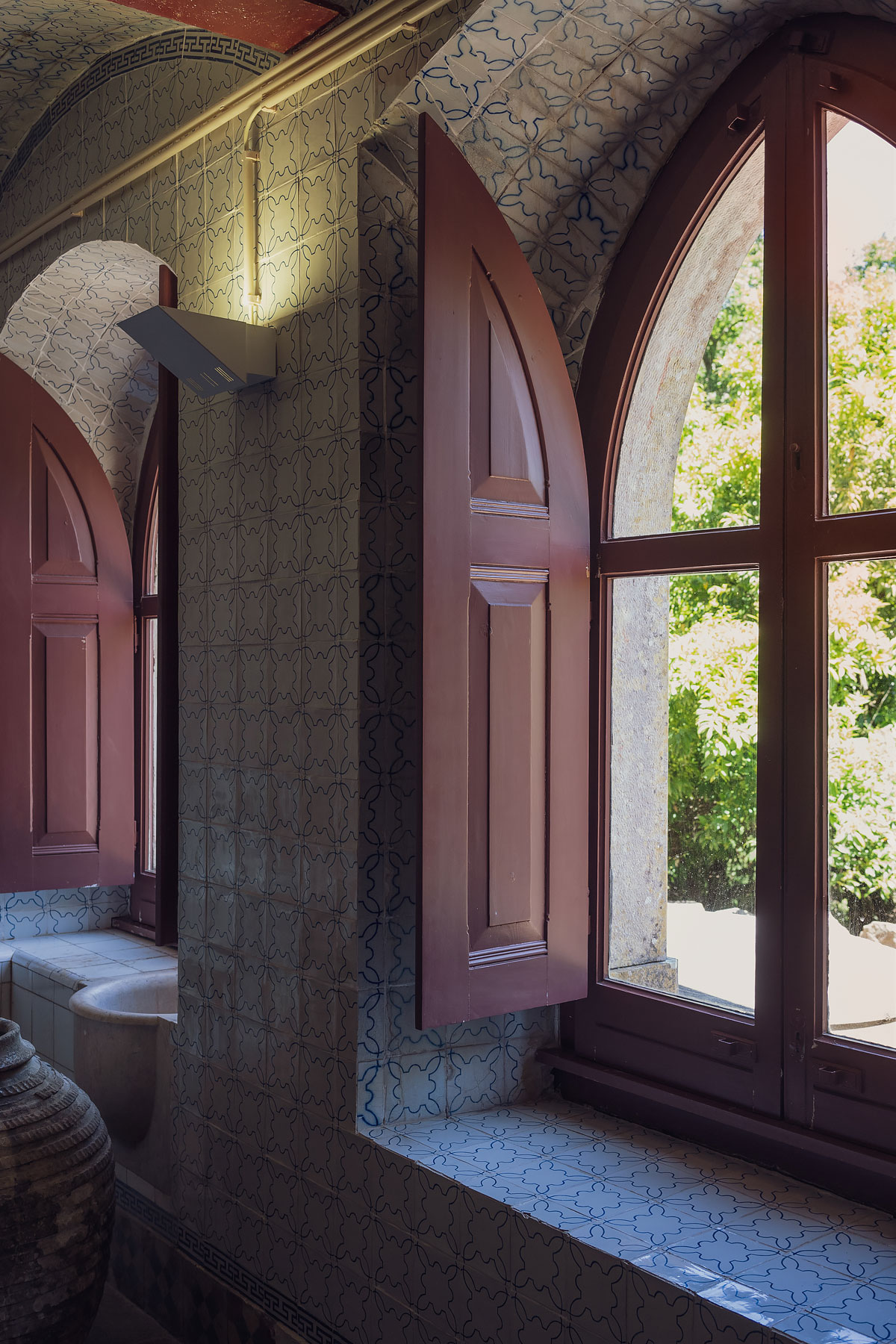
Details of the architecture and restoration work are on display on the second story. Here visitors can get a sense of the utter state of disrepair the estate was in before the award-winning repair work took place.
What I love most about the park and the palace is the testament it gives to the boundlessness of the imagination. It’s a perfect example of one visionary bringing thoughts and ideas into reality. From the seemingly magical palace interior to the extraordinary garden, brought to life by one person’s vision and the expert hands he put to use to achieve it.

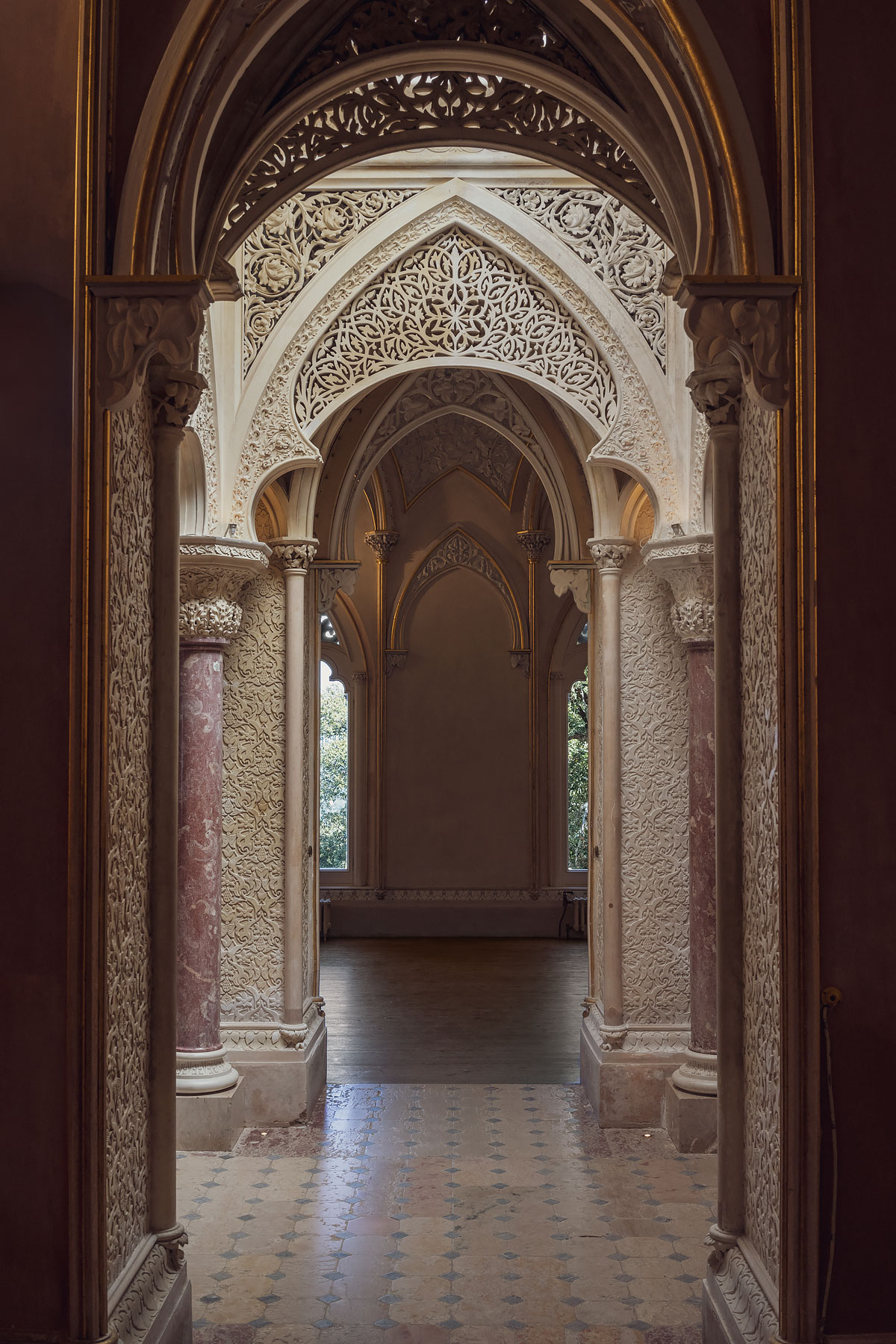
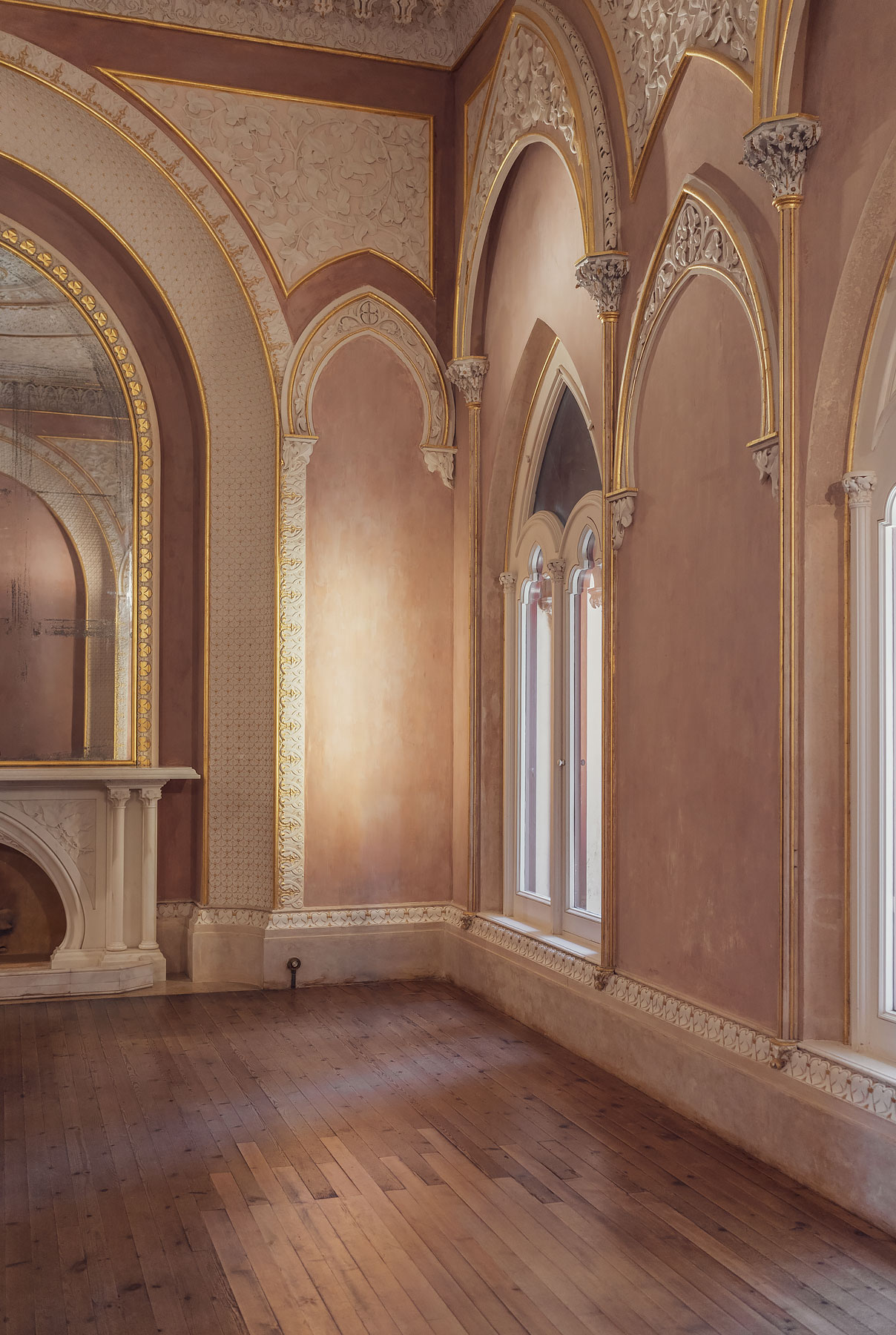
A few tips before you go
Tickets: Can be bought in advance on the Parks of Sintra website.
Getting there: There are hourly trains that run from Rossio station in Lisbon directly into Sintra and takes about an hour.
Good to know: It’s a good idea to buy the train tickets a day in advance to avoid long cues at the station and to go early in the day as the whole of Sintra gets very very busy.
Do it differently: If you are into sports we can highly reccomend renting bicycles and cycling around the area. For the less advanced, there are several companies renting electric bikes (it is extremely hilly) but for those who like the grind it’s a great way to train those legs.
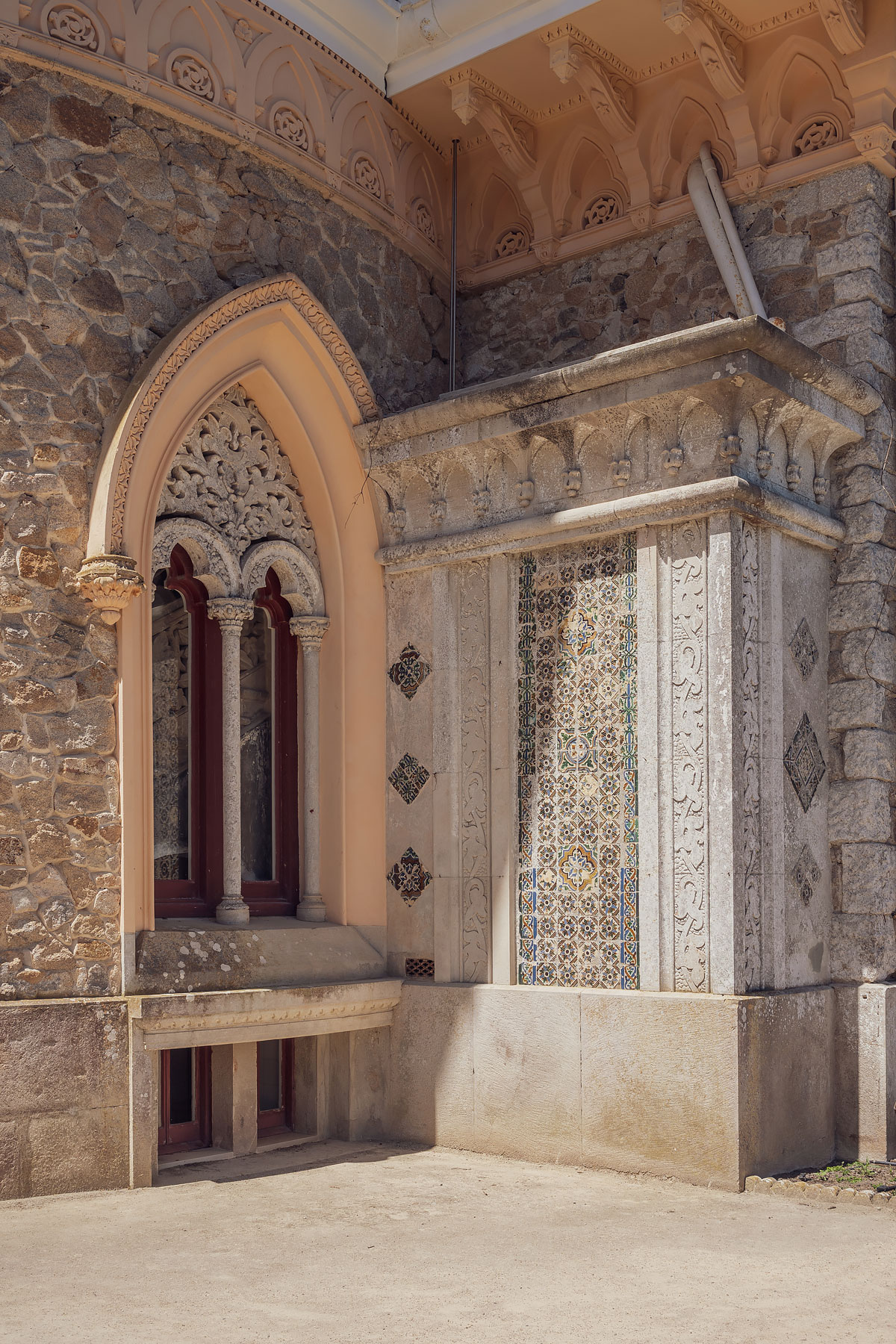
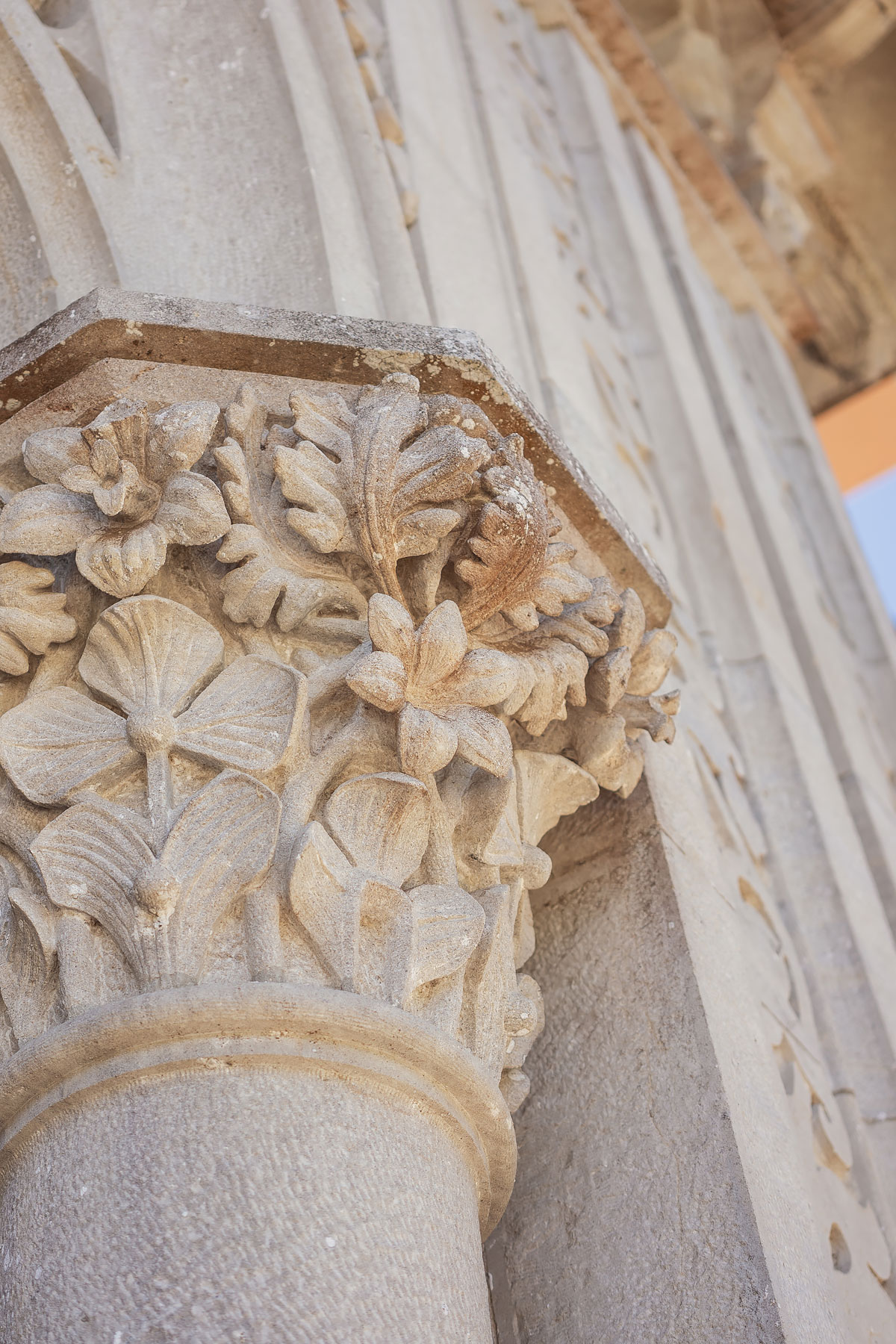
Text & Photography © Barbara Cilliers
Wild about nature?
Sign up to the newsletter for more inspirational content and adventures from the wild.



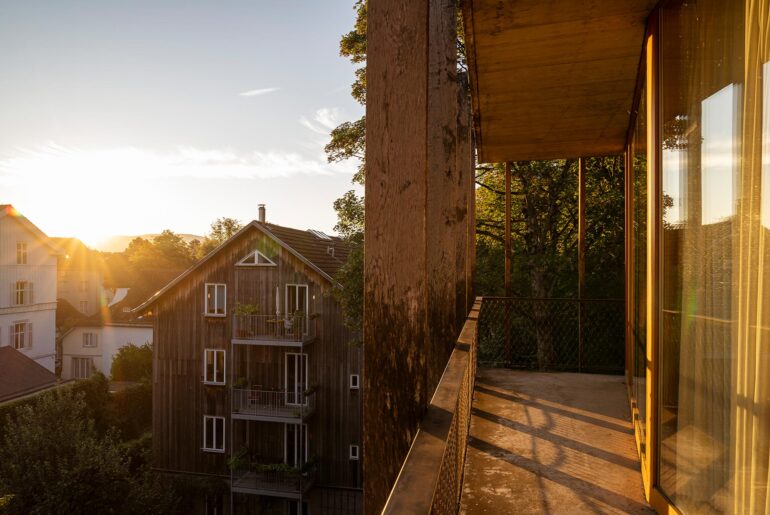
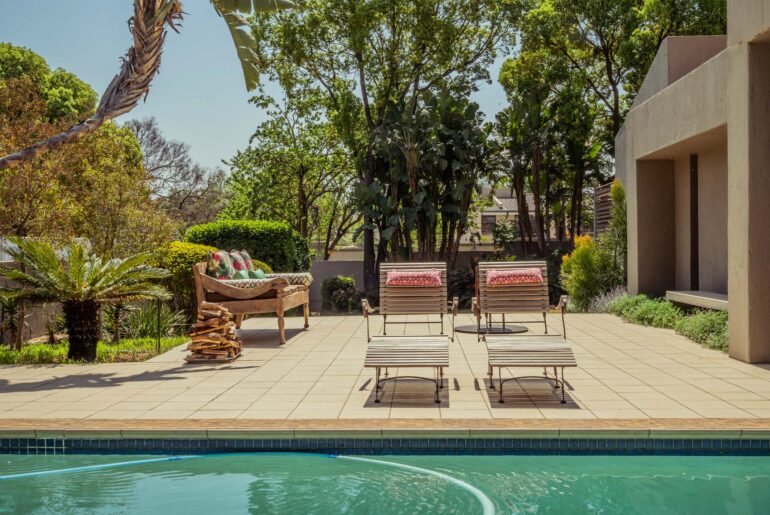
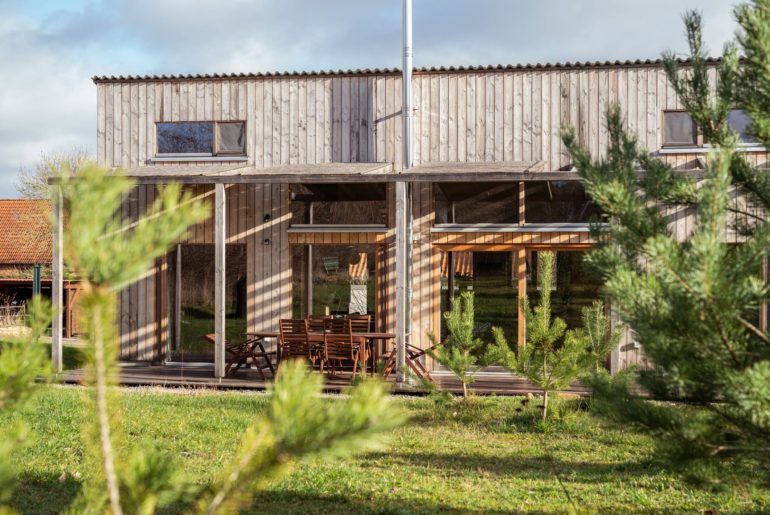
Comments are closed.